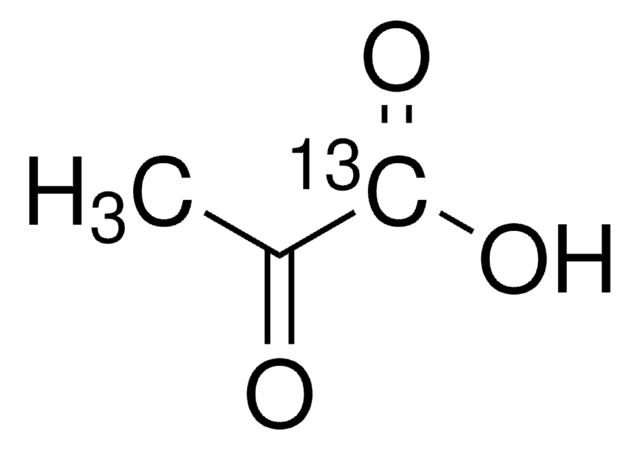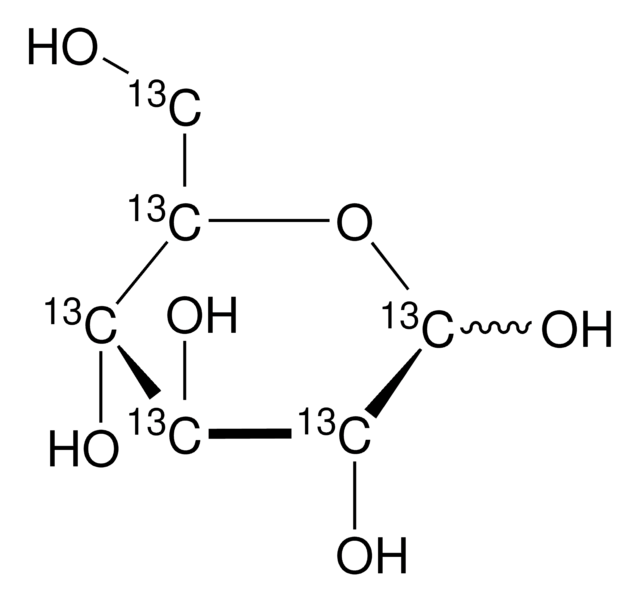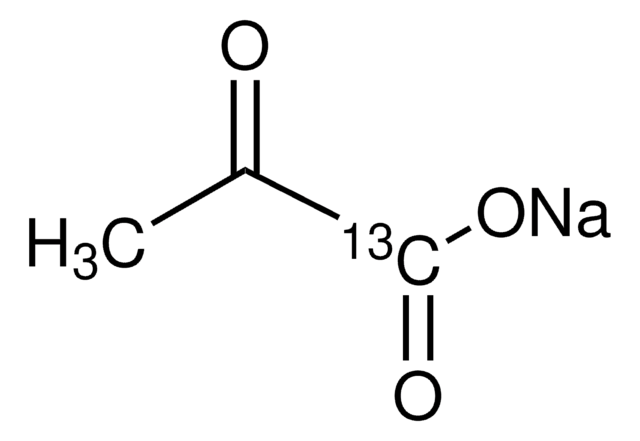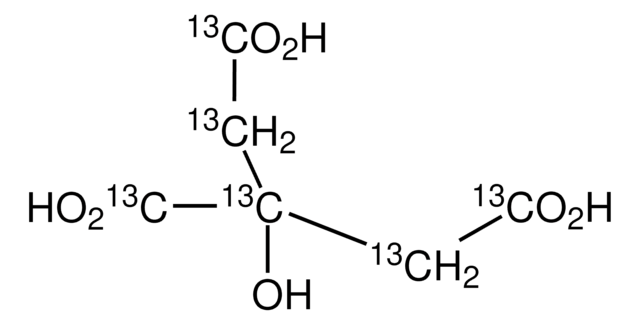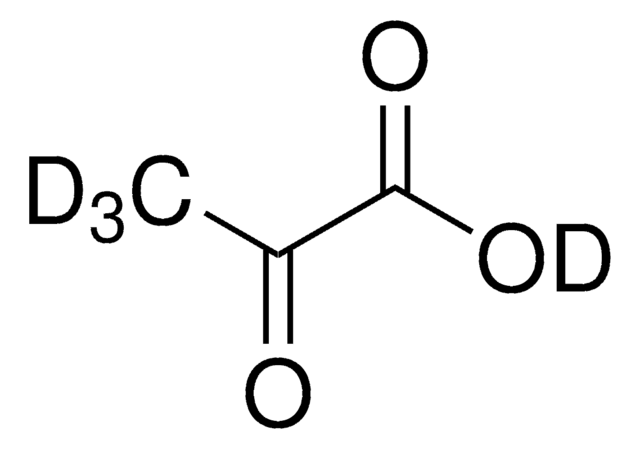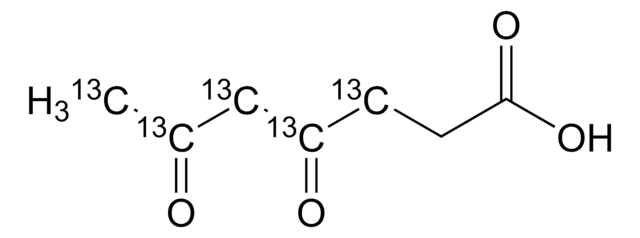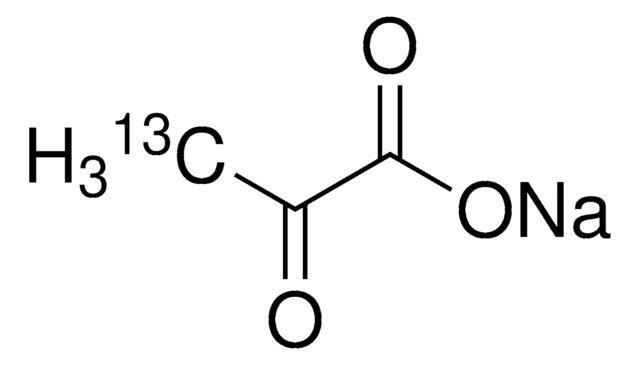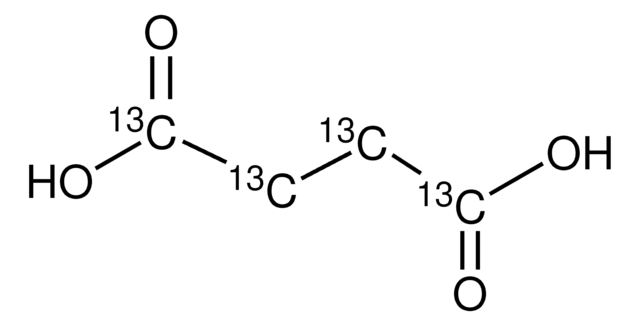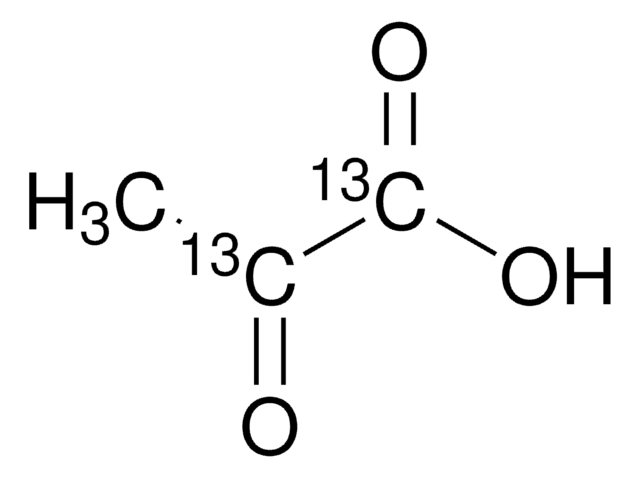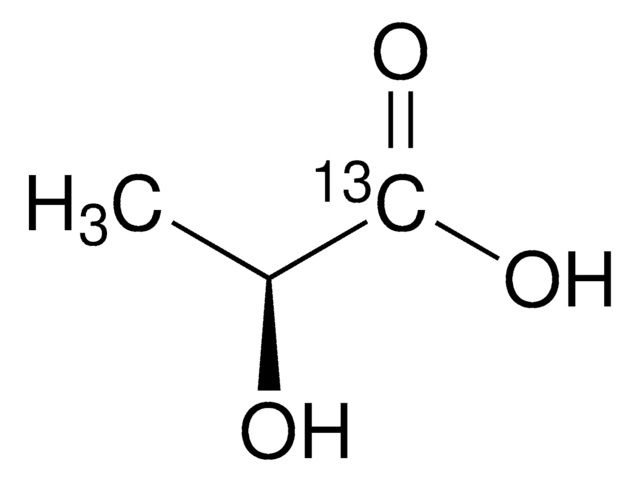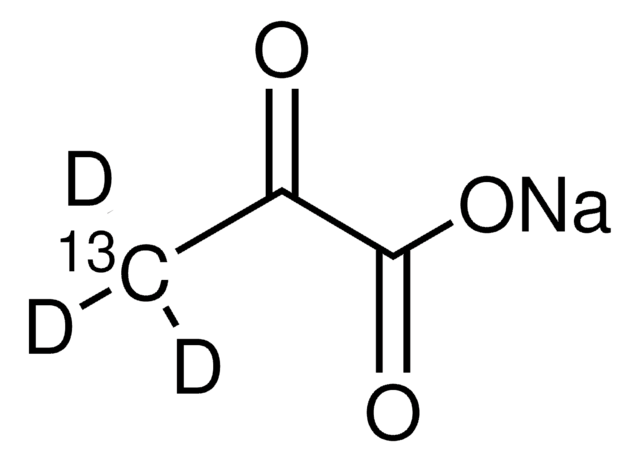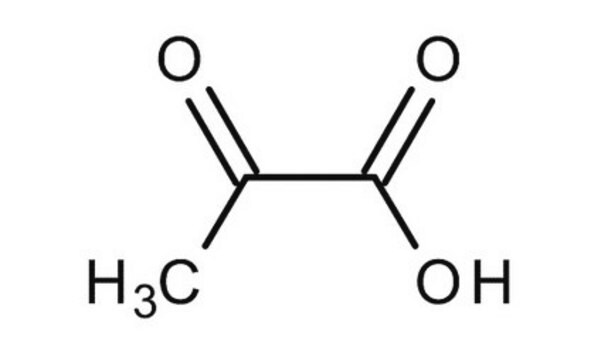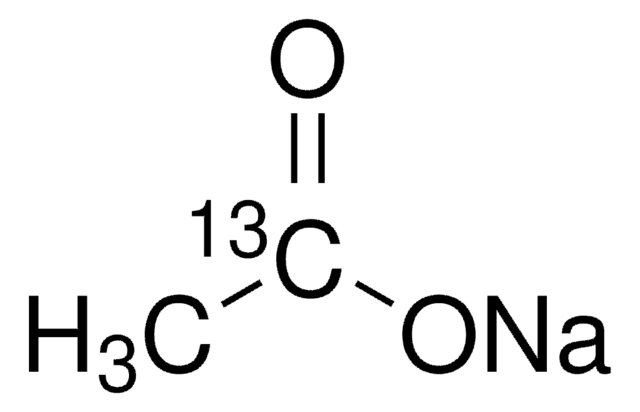677175
Pyruvic-1-13C acid (free acid)
≥99 atom % 13C, ≥99% (CP)
Sinonimo/i:
α-Ketopropionic acid-1-13C, 2-Oxopropionic acid-1-13C, 13C Labeled pyruvic acid, Pyruvic acid-1-13C
About This Item
Prodotti consigliati
Purezza isotopica
≥99 atom % 13C
Livello qualitativo
Saggio
≥99% (CP)
Stato
liquid
P. ebollizione
165 °C
Punto di fusione
11-12 °C
Densità
1.281 g/mL at 25 °C
Spostamento di massa
M+1
Condizioni di spedizione
dry ice
Temperatura di conservazione
−20°C
Stringa SMILE
CC(=O)[13C](O)=O
InChI
1S/C3H4O3/c1-2(4)3(5)6/h1H3,(H,5,6)/i3+1
LCTONWCANYUPML-LBPDFUHNSA-N
Cerchi prodotti simili? Visita Guida al confronto tra prodotti
Categorie correlate
Descrizione generale
Applicazioni
Confezionamento
Avvertenze
Danger
Indicazioni di pericolo
Classi di pericolo
Eye Dam. 1 - Skin Corr. 1C
Codice della classe di stoccaggio
8A - Combustible corrosive hazardous materials
Classe di pericolosità dell'acqua (WGK)
WGK 1
Punto d’infiammabilità (°F)
179.6 °F - closed cup
Punto d’infiammabilità (°C)
82 °C - closed cup
Scegli una delle versioni più recenti:
Possiedi già questo prodotto?
I documenti relativi ai prodotti acquistati recentemente sono disponibili nell’Archivio dei documenti.
I clienti hanno visto anche
Articoli
Review the 10 steps of glycolysis in the Embden-Meyerhof-Parnas glycolytic pathway. Easily compare reaction stages and buy the enzymes for your life science research.
Sigma-Aldrich.com presents an article concerning MRI/MRS and the use of isotopes in hyperpolarization.
Dynamic Nuclear Polarization (DNP) is a phenomenon by which high spin polarization, typically derived from a bath of free radical electrons, is transferred to a nuclear spin bath, enhancing the difference between the nuclear energy levels and thereby producing dramatically enhanced NMR signals for detection.
Global Trade Item Number
| SKU | GTIN |
|---|---|
| 677175-100MG | 4061833239117 |
| 677175-1G | 4061826589960 |
| 677175-5G | 4061832748337 |
Il team dei nostri ricercatori vanta grande esperienza in tutte le aree della ricerca quali Life Science, scienza dei materiali, sintesi chimica, cromatografia, discipline analitiche, ecc..
Contatta l'Assistenza Tecnica.